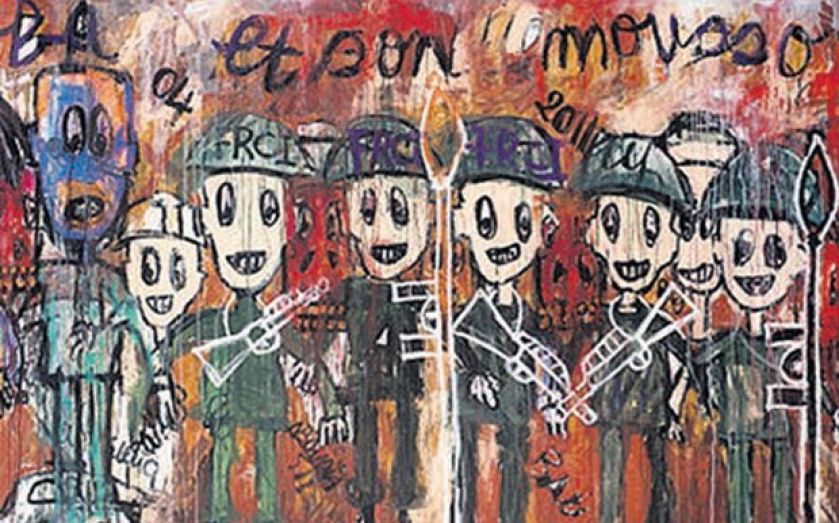Pangaea is a transcontinental hotchpotch

ART
PANGAEA
Saatchi Gallery | By Joseph Funnell
Two Stars
SINCE moving to its Chelsea residence in 2008, Charles Saatchi’s eponymous gallery has often grouped artworks by country or region. But with Saatchi having scoured every corner of the earth for big art bounty, London has been left wondering where the gallery has left to tread. So it comes only with a yawn of un-surprise and slight bafflement that the Saatchi Gallery has now decided to invent a landmass, or rather pluck one from prehistory. Pangaea provides a tenuous justification for creating a show on African and Latin American contemporary art by looking at global geography circa 300 million BC.
Two big hitters from each side of the bygone supercontinent open the show. Rafael Gómezbarros’ colony of giant ants create a typically saatchiesque spectacle with their abdomens cast from human skulls. They make an oblique comment on recent Columbian conflicts and displacement, swinging successfully between politicised memento mori and dynamic monument. Next is a series of striking canvases by young artist Aboudia from the Ivory Coast. They map a unique and engaging universe built though layers of eroticised figures, newspaper clippings and photographs of traditional sculpture. Harking back to abstract expressionism, his scratchy street symphony deserves more than an eye or ear of your attention.
The individual works are solid throughout and even awe inspiring at times, as is the case with Ghanaian artists Ibrahim Mahama’s gargantuan coal sack installation. But the way in which they have been framed and matched is an overwhelming problem. Vincent Michea’s polished pop-art souvenirs from Senegal seem strange next to Oscar Murillo’s irreverent recycled sculptures. Halfway through the show we question (if we weren’t already) whether this says anything about art in Africa or South America and, most importantly, why both? As romantic as the idea of driving from Lisbon to Sao Paolo is, the exhibition rests upon a naïve, essentialist fantasy and a penchant for clumping things together for the sake of it. Our master of marketing, Saatchi, has never been known for his historically sensitive titles (for example his the 2010 show on Indian art “The Empire Strikes Back”) but this newest permutation isn’t only crass, it’s also down-right bizarre.